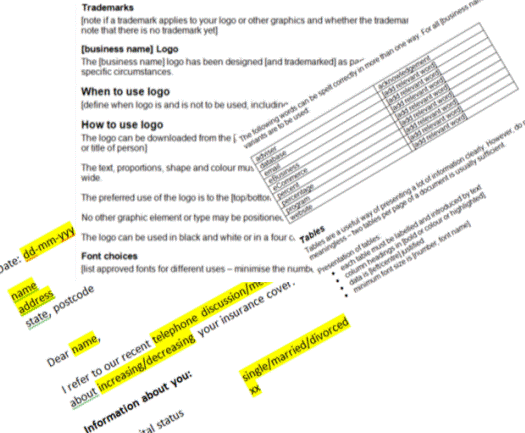I hope you find my writing and business tips and observations useful. My business and blog are dedicated to helping businesses communicate clearly and reach their potential.
Read, subscribe to my newsletter, enjoy!Tash
Making templates earn their keep – not as hard as you may think
Using a template can be a great tool – it saves time, ensures important details are included and builds consistency.
Maximising your templates
But for best results, each use of a template needs to be tailored to the purpose. Just copying it as is looks lazy and can lead to embarrassing mistakes.
That means, if you use a template…
- change all the variable fields (business name, dates, prize value and so on)
- check the text surrounding the variable fields to ensure things make sense (for instance, a template may use singular verbs but you need plural verbs)
- read the entire document from start to finish looking for
- irrelevant points
- contradictions and inconsistencies
- deviations from your style guide
Template tips
My advice for templates is to always start with the base document.
So if you have a template for competition terms, always use the original template rather than taking last month’s terms and updating them.
It is so easy to miss one field if you update an existing document, leaving a mistake that at best makes you look silly and at worst could have legal or customer service issues for you.
If you find that you are adjusting a lot of the common text, create a new version of the base template to use.
If you find you are often changing text around certain fields, make some of that text variable, too. It doesn’t have to be a blank space, you can provide two alternative sets of words (eg ‘All winners are’ or ‘the winner is’) as part of the template.
A template should be a ‘living document’ in that it is regularly reviewed and adjusted for each use. The first version can be useful but by using it, improvements often become apparent as it is used in different situations.
For documents with very sensitive content (such as legal implications) or to be used by many people of varying skills, consider setting up the document so non-variable text can’t be edited.
Do you have any other suggestions for maximising the use of templates in business?


Recent Comments